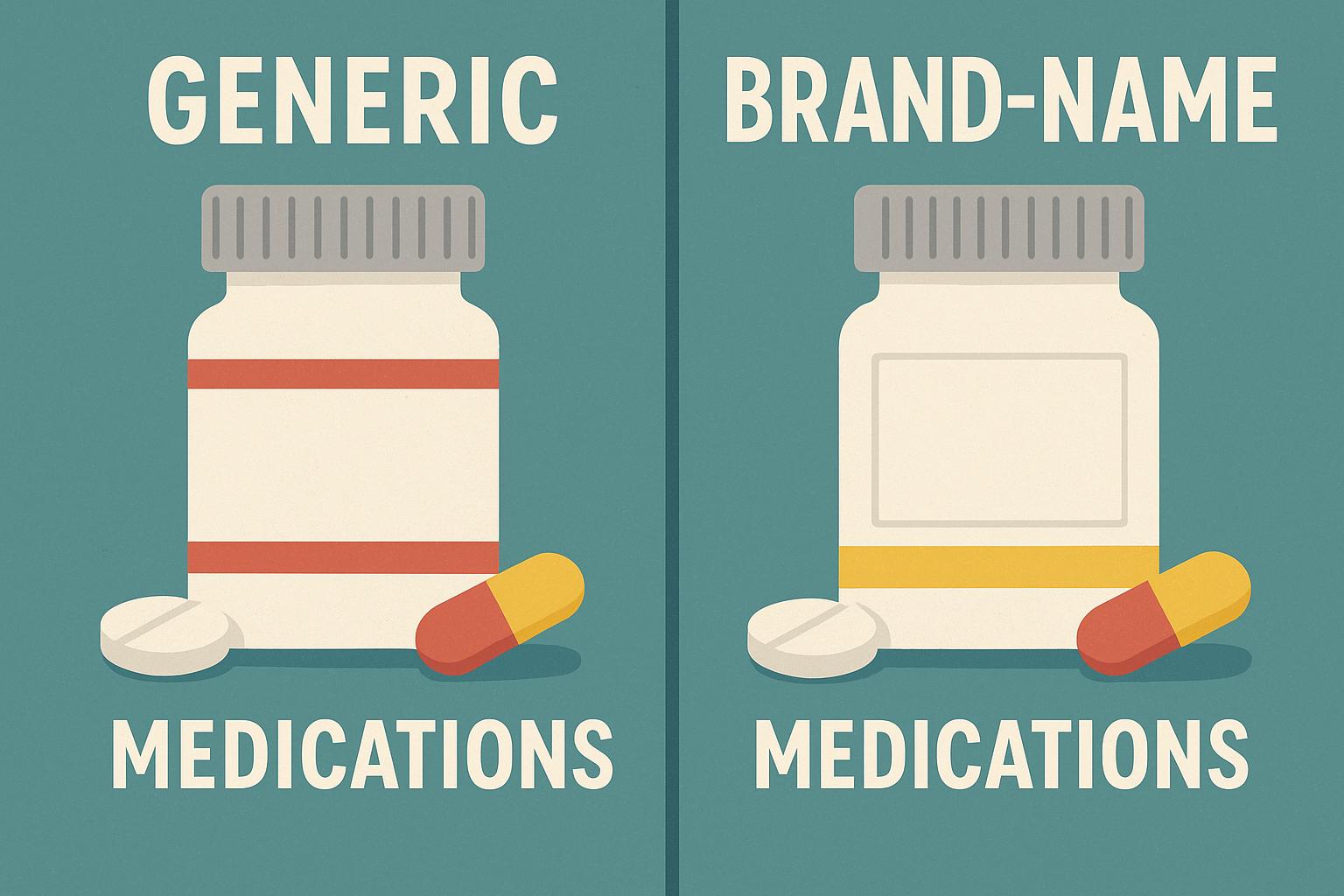
The difference between generic and brand-name medications.
Understanding Generic and Brand-Name Medications Medications play a critical role in healthcare, providing essential treatments for a wide range of medical conditions. These medications are usually available in two primary forms: generic and brand-name. Understanding the differences between these two types of medications is vital for consumers, as it can impact both the effectiveness and cost of treatment. Definition and Regulation Brand-name medications are drugs marketed under a proprietary, trademark-protected name by a specific pharmaceutical company. These drugs are typically developed after extensive research and development, clinical trials, and regulatory approval processes. During their development, pharmaceutical companies invest heavily in the research phase, which involves multiple stages including discovery, preclinical testing, and human clinical trials. This investment is protected by patents, giving the company exclusive rights to sell the drug for a specific period, usually around 20 years from the date of filing. Once approved, brand-name drugs undergo intense marketing campaigns to establish their presence and ensure healthcare providers and patients are aware of their uses and benefits. This marketing strategy often contributes to the overall cost of the brand-name drug when it reaches the consumer. On the other hand, generic medications are essentially copies of brand-name drugs that contain the same active ingredients. Generic drugs are typically produced after the original medication’s patent has expired. They must meet stringent regulatory standards to ensure that they have the same dosage form, strength, route of administration, quality, and performance characteristics as the brand-name product. Generic manufacturers must demonstrate that their product is bioequivalent to the brand-name drug, meaning that it delivers the same amount of active ingredient into a person’s bloodstream in the same amount of time. Cost Differences One of the most significant differences between generic and brand-name medications is their cost. Brand-name medications often come with higher prices due to the associated costs of research, development, and marketing. These high costs are justified by the pharmaceutical companies as a necessary means to recoup the expenses involved in bringing a new drug to market, from the initial research stages to regulatory approval and marketing efforts. The innovation and benefits they bring are reflected in their pricing strategies. In contrast, generic medications are generally less expensive because they do not bear such development costs. They enter the market after the expiration of the brand-name’s patent, allowing multiple manufacturers to produce the drug. This increased competition typically drives down the price significantly. As a result, generics provide a more cost-effective option for consumers and healthcare systems, enhancing access to necessary medications for a broader population. Effectiveness and Quality When considering the effectiveness and quality of medications, it is essential to understand the role of regulatory bodies. Agencies like the FDA in the United States require that generic medications demonstrate bioequivalence to their brand-name counterparts. This means that a generic drug must work in the same way and provide the same clinical benefit as the brand-name drug. Regulatory standards ensure that generics have the same active ingredient, strength, dosage form, and route of administration. Therefore, it is generally accepted that generic medications are just as effective as brand-name medications, offering the same therapeutic benefits for the conditions they treat. It is important to note that the inactive ingredients, often used for coloring, flavoring, or binding, may differ. These variations do not affect the overall effectiveness but can sometimes influence the patient’s experience in terms of the drug’s appearance and taste. Packaging and Appearance While the active ingredients in both generic and brand-name medications are the same, differences in inactive ingredients may result in variations in shape, color, or size. These differences do not affect the efficacy or safety of the medication but are often used to differentiate between the products legally. Packaging differences also play a significant role in distinguishing these products on pharmacy shelves and may influence consumer preference. Brand-name products often have colorful, branded packaging intended to grab consumer attention and convey trust, while generic products may have simpler packaging due to lower marketing budgets. Some patients may prefer the aesthetic or familiarity of a brand-name drug, while others may not mind the difference as long as the medication is effective and affordable. Pharmacists play a crucial role in guiding patients, explaining that despite the differences in appearance, generics are equally viable options. In conclusion, both generic and brand-name medications have their place in healthcare. Understanding their differences can help consumers make informed decisions about their treatment options, potentially saving on medication costs while maintaining the quality and effectiveness of their care. As healthcare costs continue to rise, the availability and use of generic medications will likely increase, contributing to a more sustainable healthcare system. Educating patients about these distinctions, and the regulatory measures in place to ensure safety and efficacy, can foster greater trust and reassurance in choosing the right medication for their needs.
